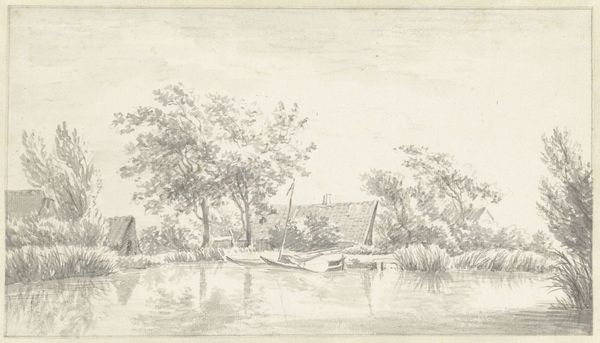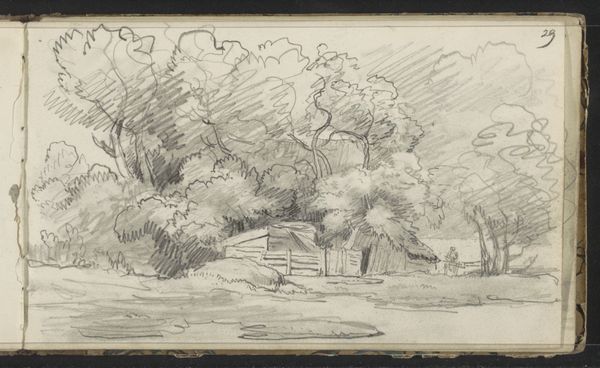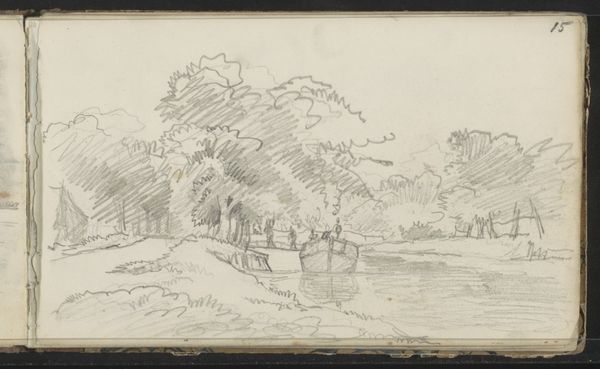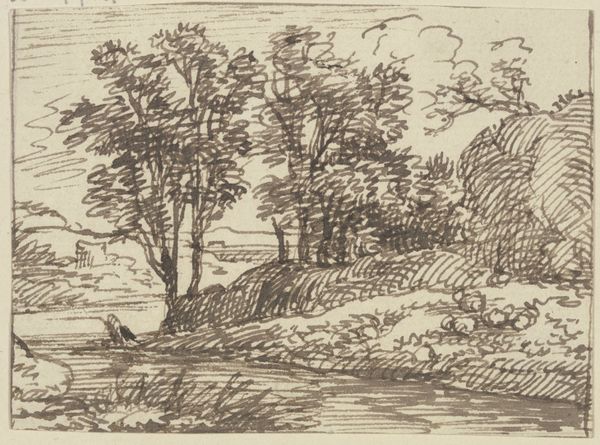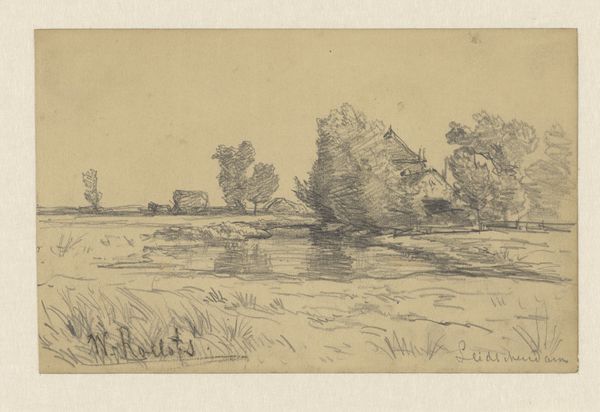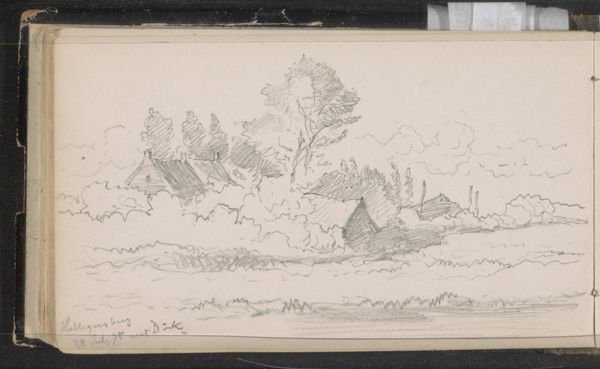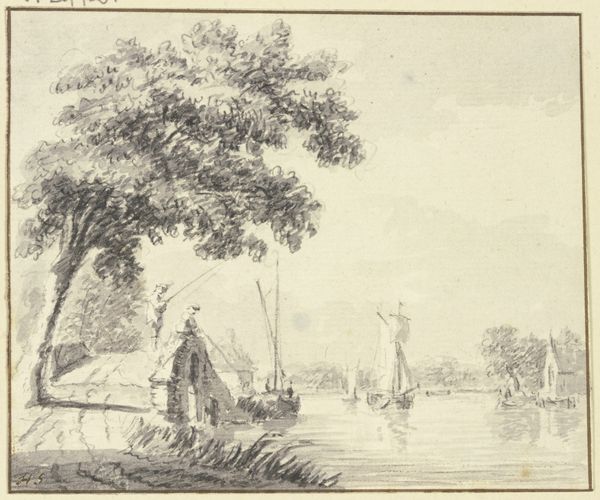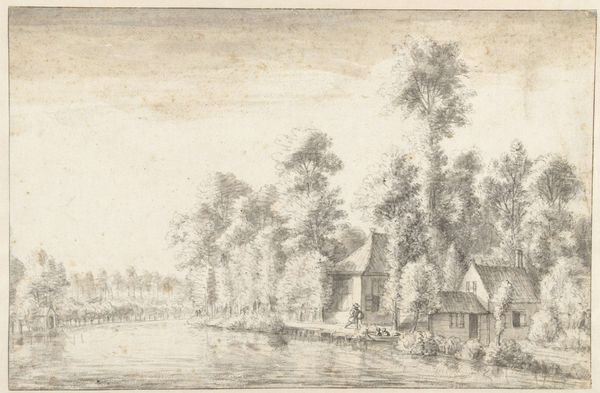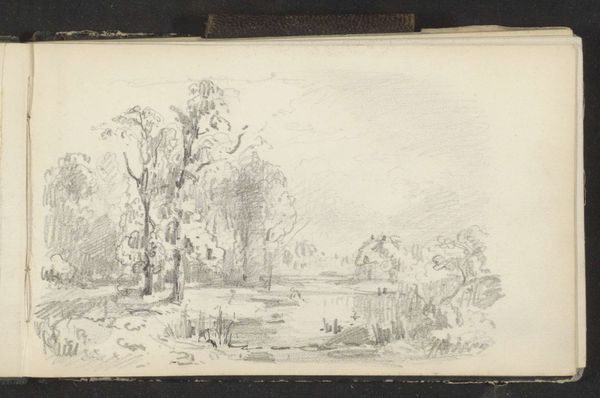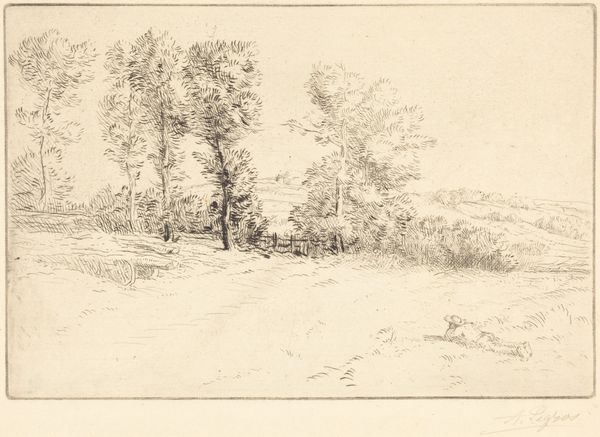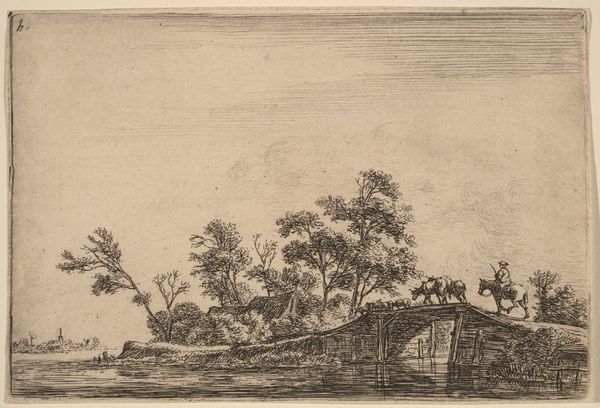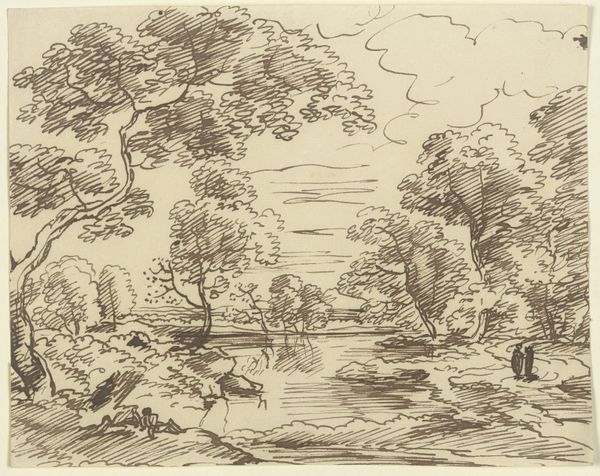
drawing, ink, pen
#
drawing
#
ink drawing
#
pen drawing
#
mechanical pen drawing
#
pen illustration
#
pen sketch
#
landscape
#
personal sketchbook
#
ink
#
ink drawing experimentation
#
pen-ink sketch
#
pen work
#
sketchbook drawing
#
pen
#
realism
Copyright: Rijks Museum: Open Domain
Editor: This is “Tekening uit archief Philip Zilcken” or, "Drawing from the Philip Zilcken Archive", created before 1927 by Alphonse Stengelin. It's a pen and ink landscape, and it feels so immediate, like a quick impression. What stands out to you? Curator: Immediately, I'm drawn to the artist’s use of readily available and relatively inexpensive materials - pen and ink on what appears to be ordinary paper. Consider the implications: this work, likely made outside of a formal studio setting, democratizes art making, shifting it away from expensive oil paints and elaborate canvases available primarily to a wealthy elite. Do you see how this challenges traditional notions of high art? Editor: That's fascinating! It does feel almost… anti-establishment in its simplicity. Curator: Exactly! Think about the labor involved. The artist meticulously rendered this landscape with repetitive pen strokes. The act of mark-making itself becomes significant, a record of the artist's time and physical engagement with the scene. How does that meticulous, almost meditative process affect your understanding of the artwork's value? Editor: It makes me appreciate the time and effort put into it, even if the materials were simple. I mean, a photograph could capture the scene instantly. The hand-made aspect is central here. Curator: Precisely. The imperfections, the variations in line weight, these speak to the artist's hand. This challenges the slick perfection often associated with industrialized art production and reminds us of the human labor at its core. The scene itself—the house, the smoke, and the land – this depicts elements of the environment in which labor and craft is at play, and it is recorded plainly. Editor: I hadn't thought about it that way. Seeing the landscape as connected to work… Curator: And consumption! Who occupies the houses? Whose livestock roam the fields? Material realities! Hopefully this offers an insight into how art can be viewed beyond formal beauty, placing the emphasis on process and cultural context. Editor: Absolutely. Thanks for showing me how the artist's choices reflect a broader cultural landscape, especially regarding labor and resources.
Comments
No comments
Be the first to comment and join the conversation on the ultimate creative platform.
